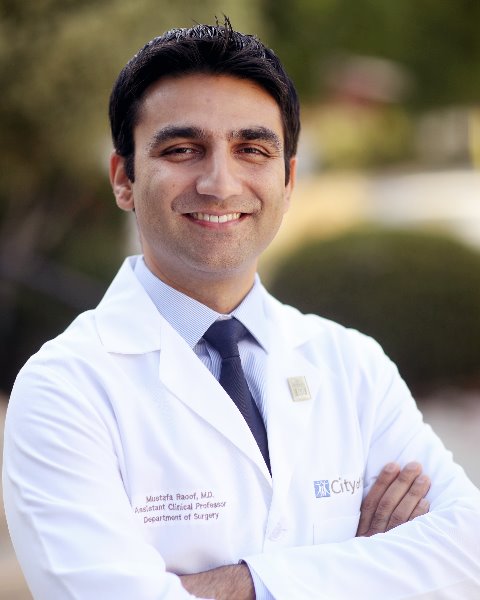PSM
non-CME
P54: A comparative evaluation of efficacy endpoints in colorectal and appendiceal carcinomatosis treated with PIPAC: Secondary analysis of a US multicenter phase 1 trial

Kevin M. Sullivan, MD (he/him/his)
Fellow
City of Hope
Pasadena, California, United StatesDisclosure information not submitted.

Kevin M. Sullivan, MD (he/him/his)
Fellow
City of Hope
Pasadena, California, United StatesDisclosure information not submitted.
- RW
Richard L. Whelan, MD
Chief, Colorectal Surgery
Northwell Health, United StatesDisclosure information not submitted.
- CR
Christopher Ruel, MS
Sr. Systems Specialist, Biostatistics
City of Hope National Medical Center, United StatesDisclosure information not submitted.
- PF
Paul Frankel, PhD
Research Professor, Biostatistics
City of Hope National Medical Center, United StatesDisclosure information not submitted.
- MF
Marwan Fakih, MD
Professor, Department of Medical Oncology
City of Hope National Medical Center, United StatesDisclosure information not submitted.
- JC
Joseph Chao, MD
Associate Professor, Department of Medical Oncology
City of Hope National Medical Center, United StatesDisclosure information not submitted.
- DL
Dean Lim, MD
Professor, Department of Medical Oncology
City of Hope National Medical Center, United StatesDisclosure information not submitted.
- YW
Yanghee Woo, MD
Associate Professor
CITY OF HOPE CANCER CENTER
Duarte, California, United StatesDisclosure information not submitted.
- IP
Isaac B. Paz, MD
Professor
City of Hope National Medical Center, Duarte, CA, United States, United StatesDisclosure information not submitted.
- ML
Michael Lew, MD
Clinical Professor, Department of Anesthesiology
City of Hope National Medical Center, United StatesDisclosure information not submitted.

Yuman Fong, MD
Sangiacomo Chair and Chairman
City of Hope Medical Center
Duarte, CA, California, United StatesDisclosure information not submitted.
- WS
Wiebke Solass, MD
Institute of Pathology and Neuropathology
University Hospital Tübingen, United StatesDisclosure information not submitted.
- RT
Rebecca Thomas, MD
Professor, Department of Pathology
Nortwell Health, United StatesDisclosure information not submitted.
- SC
Sue Chang, MD
Assistant Professor, Department of Pathology
City of Hope National Medical, United StatesDisclosure information not submitted.
- AB
Andrew M. Blakely, MD
Program Director
Surgical Oncology Program, National Institutes of Health, United StatesDisclosure information not submitted.
- DD
Danielle DePeralta, MD
Associate Professor of Surgery
Zucker School of Medicine at Hofstra/Northwell Health, United StatesDisclosure information not submitted.

Marc A. Reymond, MD, MDA
Managing Director, National Center for Pleura and Peritoneum
University of Tuebingen
Tuebingen, Baden-Wurttemberg, GermanyDisclosure information not submitted.
- AM
Amit Merchea, MD
Division of Colon and Rectal Surgery
Mayo Clinic, United StatesDisclosure information not submitted.

Thanh H. Dellinger, MD
Associate Professor
City of Hope National Medical Center
Duarte, California, United StatesDisclosure information not submitted.

Mustafa Raoof, MD, FACS
Assistant Professor
Department of Surgery, Cancer Genetics and Epigenetics
Duarte, California, United StatesDisclosure information not submitted.
Poster Presenter(s)
Author(s)
Optimal efficacy endpoint for trials involving treatment of peritoneal metastases (PM) is unknown. Histologic, laparoscopic, radiographic criteria have been proposed. However, it is unclear if these surrogate response criteria correlate with overall survival in regional therapy trials of pressurize intraperitoneal aerosolized chemotherapy (PIPAC).
Methods:
This is a secondary analysis of the multicenter prospective phase I clinical trial (NCT04329494) utilizing PIPAC with 90 mg/m2 oxaliplatin in combination with sensitizing systemic chemotherapy (5-fluorouracil and leucovorin) for patients with chemotherapy refractory colorectal cancer (CRC) and appendiceal cancer (AC) PM. PIPAC and intravenous chemotherapy were administered every 6 weeks for a total of 3 sessions. Radiographic response was evaluated by RECIST v1.1; laparoscopic response was defined as reduction in peritoneal carcinomatosis index (PCI); and histologic response was defined by peritoneal regression grading system (PRGS).
Results:
A total of 12 patients were included: 8 CRC and 4 AC. Median number of prior chemotherapy cycles was 2 (inter-quartile range (IQR): 2-3). All patients were refractory to systemic oxaliplatin-based chemotherapy. Median PCI was 28 (IQR:19-32). Feasibility and toxicity data have been previously reported. Median overall survival (OS) was 12 months and median progression free survival (PFS) was 2.9 months. At the completion of PIPAC treatment 6 patients had stable disease and 6 had disease progression by RECIST. Similarly, laparoscopic PCI response was seen in 5 patients and 1 had stable disease. Histologic response or stable disease was seen in 7/12 (58%) patients. Stable disease by RECIST criteria was associated with improved overall survival (OS) (median OS not reached) compared to progressive disease (OS 4.3 months) (log-rank p=0.03, Figure 1). Response by PCI or PRGS were not associated with survival (log-rank p >0.05). PCI response was correlated with RECIST response, but histologic response was not.
Conclusions:
A comparative analysis of surrogate endpoints in this PIPAC trial demonstrates that RECIST v1.1 is associated with OS. However, laparoscopic PCI response and histologic criteria (PRGS) are not. These findings have broad implications for designing future regional therapy trials.
Learning Objectives:
- Upon completion, participant will be able to describe the oxaliplatin PIPAC procedure and its application in colorectal and appendiceal cancers.
- Upon completion, participant will be able to report the side effects and safety of PIPAC in colorectal and appendiceal cancers.
- Upon completion, participant will be able to describe the association between overall survival and imaging response after PIPAC.
